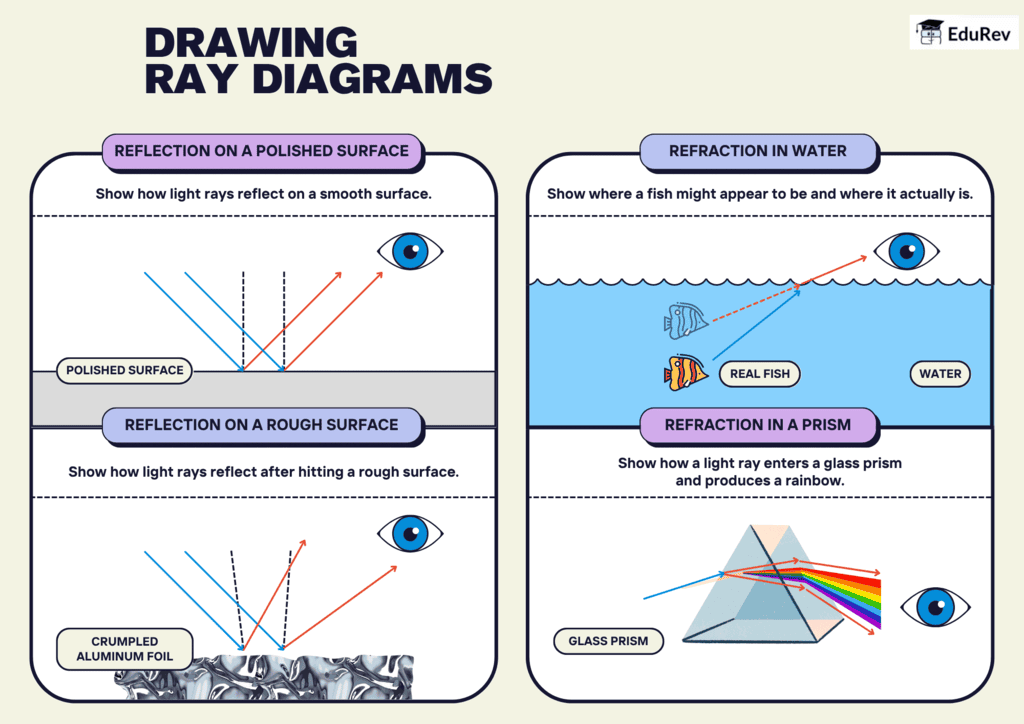Class 10 Exam > Class 10 Notes > Science Class 10 > Infographics: Drawing Ray Diagrams
Infographics: Drawing Ray Diagrams | Science Class 10 PDF Download

The document Infographics: Drawing Ray Diagrams | Science Class 10 is a part of the Class 10 Course Science Class 10.
All you need of Class 10 at this link: Class 10
|
82 videos|681 docs|80 tests
|
FAQs on Infographics: Drawing Ray Diagrams - Science Class 10
| 1. What is a ray diagram in optics? |  |
Ans. A ray diagram is a graphical representation used in optics to illustrate the path that light rays take as they interact with optical devices like lenses and mirrors. It helps to visualize how light is refracted or reflected and assists in predicting the position and characteristics of images formed by these devices.
| 2. How do you draw a ray diagram for a concave lens? |  |
Ans. To draw a ray diagram for a concave lens, follow these steps: First, draw the lens shape and indicate the principal axis. Next, draw an object arrow (perpendicular to the axis) in front of the lens. Then, trace at least two rays from the top of the object: one parallel to the principal axis that diverges after passing through the lens, and another that goes through the focal point on the same side as the object and then travels parallel to the axis. Finally, extend the diverging rays backward to find where they appear to converge, indicating the position of the image.
| 3. What are the characteristics of the image formed by a convex lens? |  |
Ans. The image formed by a convex lens can vary depending on the object's distance from the lens. It can be real or virtual, inverted or upright, and its size can be larger or smaller than the object. Specifically, when the object is beyond the focal point, the image is real, inverted, and can be smaller or larger; when the object is within the focal length, the image is virtual, upright, and larger.
| 4. Why is it important to understand ray diagrams in physics? |  |
Ans. Understanding ray diagrams is crucial in physics as they provide a clear visual representation of how light behaves when interacting with different optical components. This knowledge is fundamental for designing optical systems, understanding image formation in cameras, microscopes, and other devices, and for solving various practical problems in optics.
| 5. What common mistakes should be avoided when drawing ray diagrams? |  |
Ans. Common mistakes to avoid when drawing ray diagrams include not properly identifying the focal points, incorrectly labeling the object and image distances, neglecting to draw all required rays, and failing to indicate the direction of light travel. Additionally, not maintaining the correct proportions can lead to misunderstandings about the image characteristics.
Related Searches
















